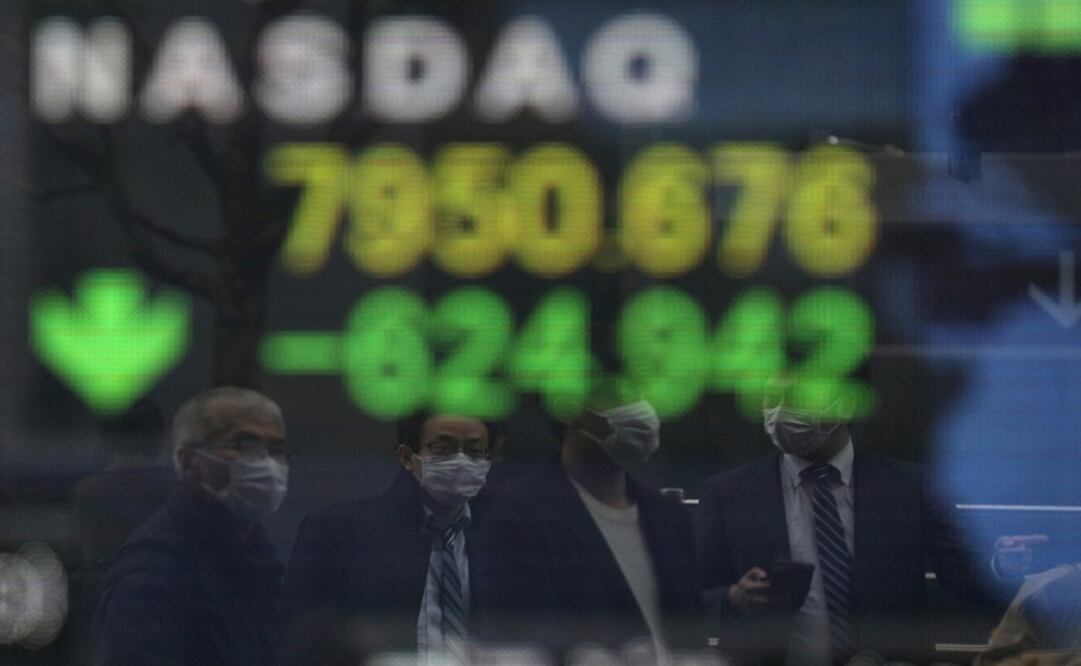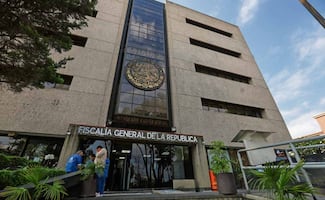Más Información

Posponen en el Senado discusión y votación de reforma para crear la figura de “jueces sin rostro”; se discutirá en febrero

Harfuch descarta que explosión de coche bomba en Michoacán sea un hecho terrorista; "son actos criminales", sostiene

SRE: Buscaremos llegar a un acuerdo con EU por adeudo de agua; vamos a respetar derecho humano al líquido, afirma
Markets are bearish after the “Black Monday”
that plunged oil prices to its lowest level since the 1991 Gulf War ; the risk of a new global recession is high due to a combination of three key factors, the showdown between major oil producers Russia and Saudi Arabia , the coronavirus pandemic , and the United States corporate debt .
Regarding the first factor, it has been widely explained that its roots lie in Moscow ’s decision to end more than three years of collaboration with the so-called OPEC+ coalition to curb oil production and support prices, coordinating with Riyadh and the other members of the Organization of Petroleum Exporting Countries .
The impact of this measure, adopted by economic and geopolitical reasons such as the competition from U.S. shale oil producers , and as a response to White House sanctions on the Nord Stream 2 pipeline linking Siberia ’s gas fields with Germany , was immediately felt.
Instead of accepting the Saudi proposal to cut production by 1.5 million barrels a day , or about 1.5% of global production , Russia abandoned the OPEC Vienna meeting last Friday after five hours of negotiation, plunging oil prices 25% in the wake of an energy demand reduced by coronavirus in China , Italy , and other countries.
Recommended: Saudi oil price cuts seen reigniting market share war with Russia
While Mexico ’s mix plummeted to USD $24.43 per barrel compared to Friday’s price of USD $35.75 per barrel—the largest drop in absolute and relative terms since 2000—experts are anticipating that the U.S. shale sector will take the brunt of the crisis, following the Saudi reaction to slash prices to USD $6-USD $8 for Asian and European customers, and ramp up production in the order of 10 million barrels a day.
Thanks to the shale industry , the U.S. is the top oil producer , flanked by Saudi Arabia and Russia . However, the current lack of investment in the sector and low prices will constrain activity in places like the Permian Basin in Texas and New Mexico , just as they did in 2014-2016.
According to the Federal Reserve Bank of Dallas , USD $50 per barrel is the price at which it becomes profitable to drill a new well in the United States , exceeding the production costs of the two foreign rivals.
Large companies such as Exxon have already scaled back with prices at USD $50 a barrel. In Texas , the number of active rigs fell from 553 in October 2018 to 398 in January 2020. Around the same time, the oil industry in Texas lost nearly 14,000 jobs.
This negative picture leads oil and business expert Wolf Richter to point out that the “ great American oil bust ” commenced in 2014 and it is now in its second phase, highlighting that the impact of the price war was so chaotic and brutal that the Energy Information Administration , part of the U.S. Department of Energy , delayed for Wednesday the release of the Short-Term Energy Outlook to allow time to incorporate recent market events.
Richter underscored the collapse of shares and bonds from Occidental Petroleum , Chesapeake Energy , Whiting Petroleum , and other big U.S. companies, noting that the ultimate goal of the price war is to bankrupt them and keep future investors away from the shale oil sector , characterized by its cash-burning operations.
Financial hedges
Nevertheless, Richter and other specialists doubt that the strategy will work in the long-term, taking into account that in 2014-2016 investors only fled for a relatively short time before private equity firms, hedge funds, and others plowed back into it. In addition, this time smaller firms bought financial hedges against the drop in crude .
For his part, Juan Cole , historian and chief editor of Informed Comment , said that “the U.S. petroleum is on its last legs,” because the industry has been unable to attract new investments despite its short-term profitability, and because investors know that “oil is a polluting industry that will increasingly be blamed (and successfully sued) for wrecking the planet through heat-trapping carbon dioxide emission .”
Even further, Cole affirmed, Saudi Arabia is aware that the electric car is about to kill the oil market over the next 10-15 years, and it “insists on selling as much of its stranded assets as humanly possible during that twilight of black gold.”
How long the oil price war can last is an issue for another article. It is worth noting that Russia is in better shape than Saudi Arabia ; in Moscow , the Finance Ministry declared that the country could weather prices of USD $25-USD $30 per barrel for between six and 10 years, adding that it could tap into the National Wealth Fund —with some USD $150 billion or 9.2% of Russia’s growth domestic product-to ensure macroeconomic stability if low prices linger.
On the contrary, Saudi Arabia is almost entirely dependent (87%) on oil to fund government spending compared with 35% for Russia , and the situation comes in the midst of complex and protracted leadership succession. Crown Prince Mohammed bin Salman launched a purge against his chief royal rival, his uncle Prince Ahmed bin Abdelaziz because he intends to become king before the G-20 summit in Riyadh in November, Middle East Eye revealed.
Bin Salman
will not wait for his father King Salman to die because his father’s presence gives legitimacy to the son, and he wants to use the summit as the stage for his accession to the throne, also fearing that his protector United States President Donald Trump would not secure a second term in the White House.
Regarding the coronavirus pandemic , we need to stress that Washington 's response has been weak and irresponsible, to say the least. On Wednesday, Trump announced a 30-day restriction on people traveling from the Schengen Area of Europe—a measure that excludes Britain , where government preparedness has also been criticized—besides a payroll tax cut and the possibility of bailout the shale oil, airline, cruise, and luxury hotel industries.
Payroll taxes put more money into the pocketbook of workers, yet some economists have questioned whether typical stimulus measures will work during this crisis , when many may stay at home. Last week Trump signed an USD $8.3 billion spending package aimed in part to supporting research for vaccines and helping states that are battling the outbreak .
Recommended: COVID-19 is now officially a pandemic
The third factor threatening the global economy is less known, yet it is similar to the real estate bubble that burst 12 years ago when trillions of dollars in mortgage debt amassed in the U.S. According to an NBC News report, paying back the “ mountain of risky debt ” issued by companies and bought by investors during the recent economic expansion is going to be tough for businesses that have issued it if their earnings fall because of the coronavirus .
United States debt levels
are at record levels and markets for riskier debt—such as high yield corporate bonds —have been flashing warning signs. Buyers of riskier debt are also withdrawing from the markets. In mid-February, for example, an index of high-yield bonds was up almost 1.2% for the month; by month-end, the index was down 1.5%, said LevFin Insights , an analysis firm.
Nonfinancial corporate debt
outstanding in the U.S. stood at USD $10.1 trillion in the third quarter of 2019, up from USD $7.1 trillion in 2013, reported the Federal Reserve Board .
Traditionally, the amount of corporate debt outstanding has been smaller than home mortgage loans , yet now the two are neck and neck. For the first time in modern history, commercial loans are the largest group of assets held by banks, surpassing mortgage loans.
“Not only has there been a surge in corporate debt , yet the quality of the debt is the weakest it’s ever been,” remarked investment consultant David Rosenberg . “The last cycle was about the household sector and commercial banks . This is about the business sector and the holders of the spurious debt are mutual funds, insurance companies, and hedge funds,” he added.
The fastest-growing segment of the corporate debt market has been leveraged loans, those made to companies with a poor credit history or high levels of existing debt. These loans totaled USD $1.1 trillion in 2019, an increase of 15%.
Some features of today’s debt binge look a lot like the last one, said the NBC News report. Before the coronavirus hit, rising stock and bond prices had fed a complacent belief among investors that asset prices could only go up, much as during the residential housing boom that preceded the 2008 crisis.
Congress and financial regulators have also played a part in the credit bubble as they did in the past. Deepening deregulation, a favored policy of the Trump administration , in 2018 they loosened rules, encouraging investors to raise their borrowings. Rules were also relaxed for residential borrowers in the lead-up to the 2008 crisis .
Editing by Sofía Danis
More by Gabriel Moyssen
Noticias según tus intereses
[Publicidad]
[Publicidad]











